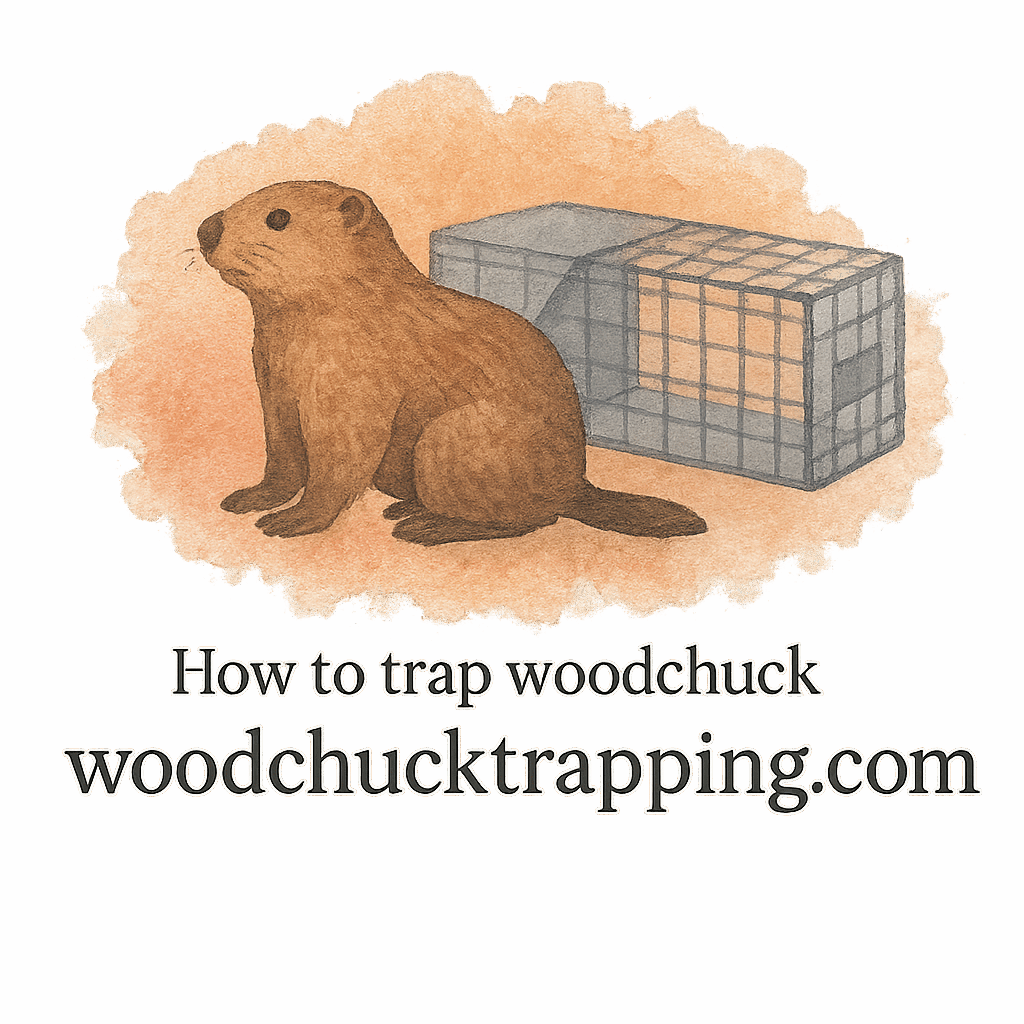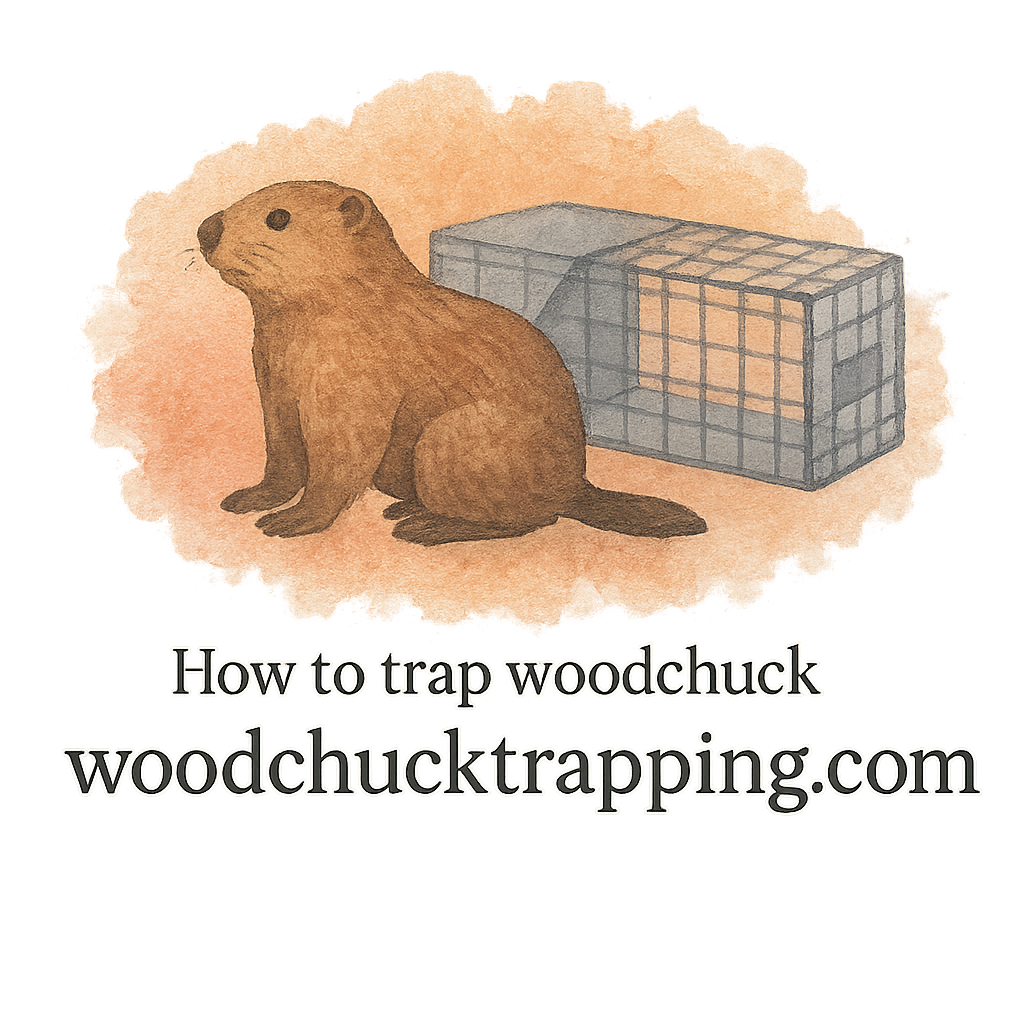Introduction
If you’ve ever walked outside only to find fresh burrows, chewed-up plants, or mounds of dirt scattered across your yard, chances are you’re dealing with a woodchuck problem. Also known as groundhogs, these critters can cause a surprising amount of damage in a short time. But here’s the good news: you don’t have to resort to harsh or cruel methods. With the right humane woodchuck trapping techniques, you can protect your yard and still respect wildlife.
In this article, we’ll explore five quick fixes that make your trapping efforts more effective and compassionate. By the end, you’ll know how to choose traps, use lures, set placement, handle animals safely, and prevent future damage — all while staying humane and legal.
Why Humane Woodchuck Trapping Matters
Balancing Wildlife and Property Protection
Woodchucks aren’t malicious — they’re just following their instincts to find food and shelter. Still, their burrows can destabilize soil, damage gardens, and even weaken foundations. By using humane trapping techniques, you’re not just solving a nuisance; you’re creating a balance between protecting your property and respecting local wildlife.
Legal and Ethical Considerations
In many regions, there are strict laws and safety regulations around wildlife trapping. Humane practices help you avoid fines and ensure you’re compliant. More importantly, treating animals humanely reflects a respect for nature that benefits both you and the ecosystem.
Understanding Woodchuck Behavior
Common Signs of Infestation
Before you start trapping, it’s important to know the signs of woodchuck activity. Fresh dirt mounds, gnawed garden crops, and burrow entrances are clear indicators. Recognizing these early gives you a head start on managing the problem.
Burrow Habits and Patterns
Woodchucks love digging. Their burrows can be extensive, with multiple entrances and escape routes. Knowing where they dig helps you place traps strategically and boosts your success rate.
Quick Fix #1: Choosing the Right Trap
Compact Traps for Small Yards
If you have limited space, compact traps are your best friend. They’re easier to position and still large enough to catch a woodchuck comfortably. For people in suburban or small yard settings, this is a game-changer.
Trap Gear and Handling Safety
Investing in quality trap gear and equipment ensures efficiency and safety. Gloves, sturdy cages, and reliable tools make trapping less stressful for both you and the animal.
Quick Fix #2: Using Effective Bait and Lures
Best Natural Foods to Attract Woodchucks
Woodchucks are vegetarians at heart. Fresh apples, carrots, and leafy greens are some of the best baiting and luring options. Place these inside the trap to draw them in naturally.
Scent Bait vs. Food Bait
Some trappers swear by scent bait while others prefer food. A combination can work wonders. Using a strong lure alongside fresh produce creates a one-two punch that woodchucks can’t resist.
Quick Fix #3: Placement of Traps
Near Burrows and Travel Paths
Placement is everything. Setting traps near active burrows or along travel paths dramatically increases your chances of success. Woodchucks prefer familiar territory, so think like they do when positioning traps.
Minimizing Human Scent
Woodchucks are cautious creatures. Avoid leaving traces of your scent by using trap scent techniques. Wearing gloves when setting traps also helps keep your efforts discreet.

Quick Fix #4: Ensuring Humane Handling
Gloves, Tools, and Safety Gear
Once a woodchuck is trapped, handling becomes critical. Always wear gloves and use safety tools to protect yourself. This reduces stress on the animal and keeps you safe from bites or scratches.
Stress-Free Release Techniques
Humane trapping means a safe release. Relocate the animal to a suitable area away from homes and farmland. For more advice on proper handling and trapped animal management, check out how to trap guides that focus on ethical practices.
Quick Fix #5: Prevention After Trapping
Repairing Yard Damage
Once the woodchuck is gone, it’s time for repair. Fill burrows, reseed grass, and mend garden fencing. Learn more about prevention and damage control to restore your yard.
Long-Term Prevention Strategies
Want to avoid future infestations? Reinforce fencing, remove attractive food sources, and monitor for signs of new activity. Humane trapping is only part of the solution — long-term prevention is the real key.
Common Mistakes to Avoid
Overlooking Signs of Activity
Ignoring early warning signs gives woodchucks more time to dig and damage. Stay vigilant and proactive.
Poor Trap Maintenance
Dirty, rusty, or malfunctioning traps won’t work well. Regular equipment reviews help you choose and maintain reliable gear.
Safety and Legal Aspects of Trapping
Understanding Local Laws
Different regions have different laws and safety requirements. Some areas even prohibit relocation. Always check before you trap.
Ensuring Personal Safety
Safety comes first. Whether it’s wearing gloves, keeping distance, or using humane techniques, protect both yourself and the animal during the process.
Equipment Reviews and Recommendations
Essential Trapping Tools
From trap gear to handling tools, having the right trapping essentials makes everything smoother.
Durable and Humane Trap Models
Not all traps are equal. Some designs are safer and more effective. For detailed advice, check the trapping techniques guide for tested and reviewed equipment.
Conclusion
Humane woodchuck trapping isn’t about being soft; it’s about being smart and responsible. By applying these five quick fixes — the right trap, effective bait, strategic placement, safe handling, and prevention — you can solve your woodchuck problem without cruelty. Remember, it’s not just about catching an animal, it’s about coexisting with nature in a respectful way.
FAQs
1. What’s the most effective bait for woodchuck traps?
Fresh vegetables like carrots, lettuce, and apples work best. Pair them with lures for stronger results.
2. Are humane traps really effective?
Yes! With proper techniques, humane traps are just as effective as harsh alternatives, and they’re safer.
3. Can I relocate a trapped woodchuck anywhere?
Not always. Check your local laws, as some regions prohibit relocation.
4. How do I prevent woodchucks from coming back?
Use fencing, remove food sources, and monitor for infestation signs regularly.
5. Is trapping woodchucks dangerous?
Not if you follow safety protocols like wearing gloves and using proper handling tools.
6. Do woodchucks damage lawns permanently?
They can, but with proper prevention and damage control, your yard can fully recover.
7. Where can I learn more about humane trapping methods?
You can explore resources on trapping essentials and detailed trapping techniques for expert advice.


